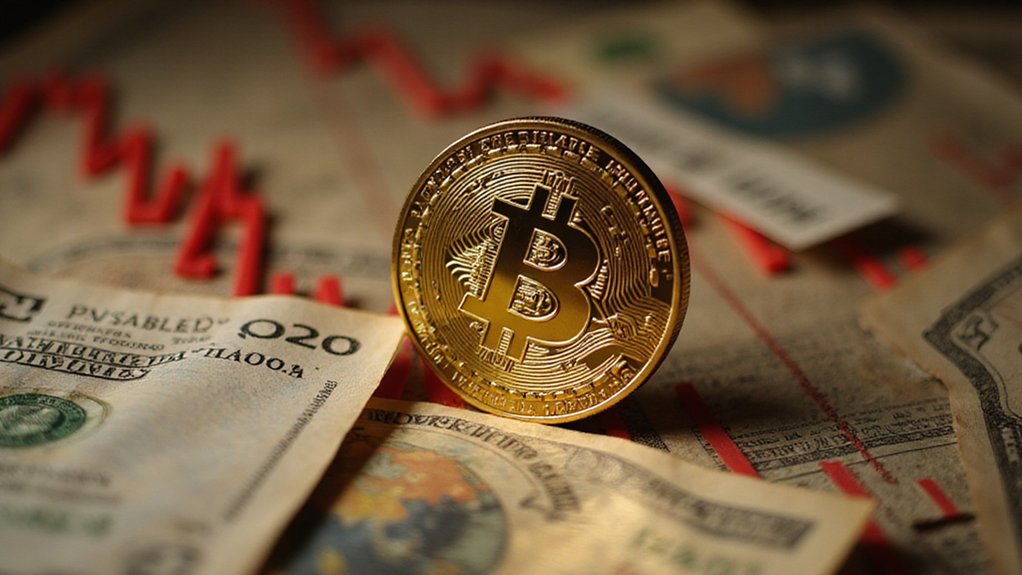A confluence of regulatory optimism and institutional euphoria has propelled Bitcoin past the $120,000 threshold, as markets digest the implications of President Trump’s crypto-friendly policy signals and the imminent passage of the Genius Act—a stablecoin regulation bill that promises to establish federal oversight where regulatory chaos once reigned.
The digital asset’s ascent to a record high of $113,734.64 appears driven by more than mere speculation, with institutional money flooding into crypto markets amid whispers of retirement account integration. Wall Street’s sudden embrace of Bitcoin—once dismissed as digital fool’s gold—reflects a dramatic shift in sentiment that would have seemed inconceivable just years ago.
Trump’s suggestion that Federal Reserve rates sit 300 basis points too high has injected additional fuel into risk-on sentiment, though economists warn such aggressive cuts could push inflation above 5% and trigger a 25% surge in home prices.
The specter of aggressive monetary easing looms large, threatening to unleash inflationary pressures that could reshape asset valuations across markets.
The potential for enhanced liquidity through rate reductions creates a compelling backdrop for assets perceived as inflation hedges, Bitcoin chief among them.
Technical analysts point to momentum indicators suggesting further upside potential, with targets ranging from $146,400 to $150,000—figures that options traders are already positioning for by year-end. A major short liquidation event totaling $447 million in positions helped fuel the recent price surge, demonstrating the powerful impact of forced selling on cryptocurrency markets.
Yet beneath this optimism lies the familiar specter of volatility, with key support levels identified at $107,000 and $100,000 should sentiment reverse.
The Genius Act’s pending signature represents perhaps the most significant regulatory development in cryptocurrency’s brief history, establishing federal baselines for stablecoin oversight while reducing the patchwork of state-level inconsistencies that have plagued the industry. The bipartisan support shown in the House for the stablecoin legislation demonstrates unusual political consensus in an otherwise divided regulatory landscape.
Critics, however, raise pointed questions about potential conflicts of interest between Trump’s business ventures and his administration’s crypto legislation.
Corporate adoption continues accelerating as Big Tech companies and traditional banks—institutions that once viewed cryptocurrency with deep skepticism—increasingly integrate digital assets into their operational frameworks. Meanwhile, innovative platforms like Kaanch Exchange are offering competitive 119% APY on crypto investments while maintaining regulatory compliance, positioning themselves as challengers to traditional finance systems.
This institutional validation provides a foundation of legitimacy that retail-driven rallies historically lacked.
Whether Bitcoin’s current trajectory represents sustainable growth or another speculative bubble remains the trillion-dollar question.
What appears certain is that the intersection of political favor, regulatory clarity, and institutional capital has created conditions unlike any the cryptocurrency has previously experienced.









